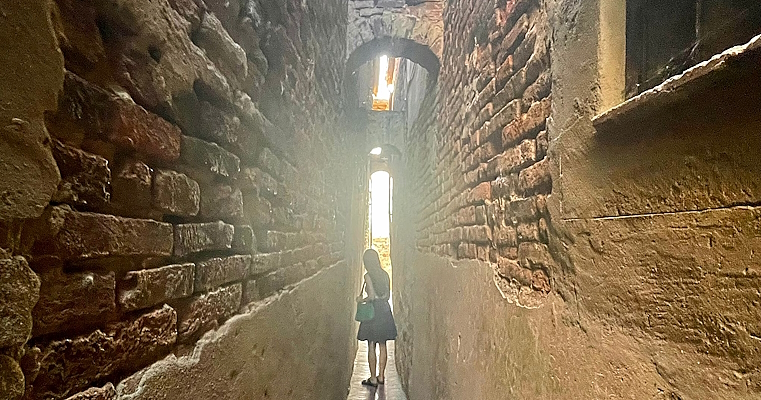Between the hills of Umbria and Tuscany rises, dominating the Val di Chiana, Città della Pieve.
Its mediaeval historic centre is built of bricks in characteristic shades of more or less dark pink, still produced in the town today. This distinguishes it from many of the Umbrian towns, which are mainly made of stone.
Another peculiarity is its eagle shape, in honour of Emperor Frederick II of Swabia.
The presence of narrow, winding alleys is typical of the urban grid in the early municipal civilisation. These were an integral part of the defensive system in that they were impenetrable to enemies attacking on horseback; furthermore, the construction of narrow, labyrinthine streets made it possible to optimise the city space, densely populated in the medieval period, and to create shelter from the summer sun and cold winter winds.
The entire Itinerary of the Alleys of Città della Pieve awaits the tourist with its 19 stages indicated by blue signs.
Here we propose just a few of the best known alleys with curious names and unexpected panoramic views: a short urban trek of about 30 minutes that will allow you to discover Città della Pieve in an original and unusual way.




























